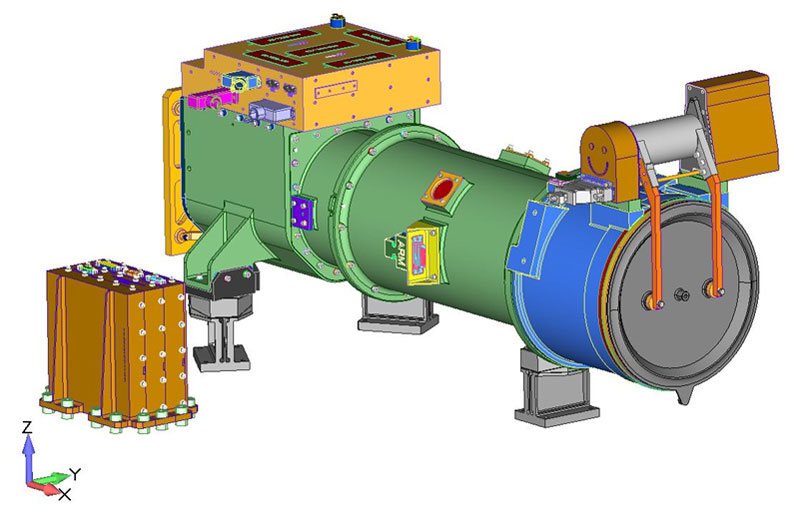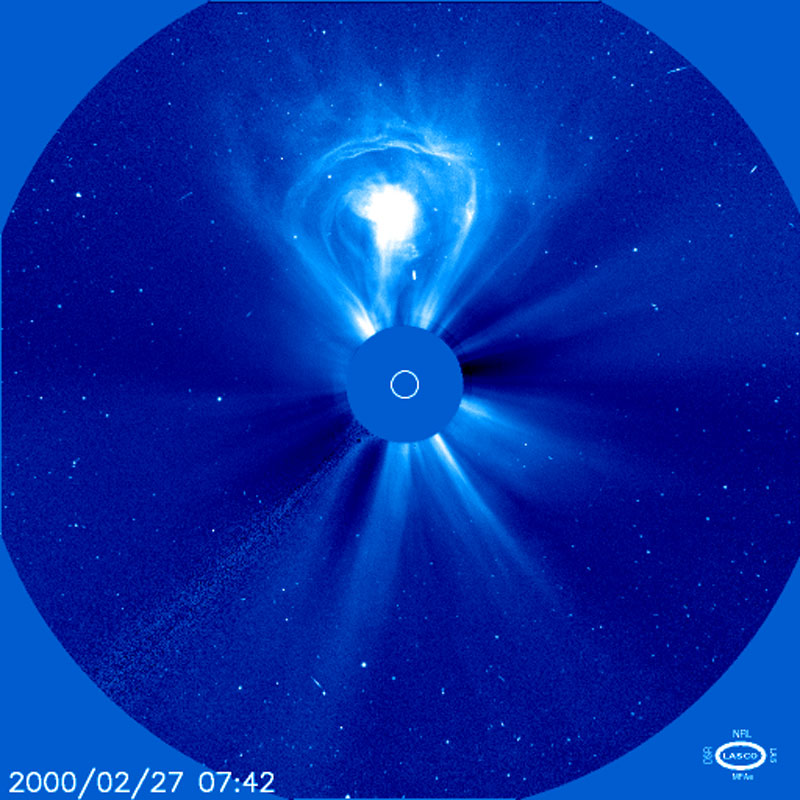
GOES-U Gets a New Instrument
July 1, 2019
The Geostationary Operational Environmental Satellite (GOES)-U, scheduled to launch in late 2024, won’t be an exact replica of its siblings in the GOES-R Series. That’s because GOES-U will accommodate an additional space weather instrument, the Naval Research Laboratory’s Compact Coronagraph (CCOR). CCOR recently completed its Critical Design Review, which affirmed that the design meets requirements and is ready to proceed with full-scale fabrication, assembly, integration and testing.

CCOR will provide critical space weather measurements for the National Oceanic and Atmospheric Administration (NOAA) Space Weather Prediction Center (SPWC). CCOR will image the solar corona (the outer layer of the sun’s atmosphere) and help detect and characterize coronal mass ejections (CMEs). CMEs are large expulsions of plasma and accompanying magnetic field from the corona. They can be remotely detected with white light imagery of the upper solar corona and CCOR is designed to capture this white light imagery. Sequences of CME images can be used to determine size, velocity, and density of CMEs. CME imagery is currently the only source of 1+ day watches of impending geomagnetic storm conditions.
Geomagnetic storms are major disturbances of Earth’s magnetosphere caused by shock waves in the solar wind. Geomagnetic storms are the costliest type of space weather events as they can cause widespread damage to power grids, satellites, and communication and navigation systems. CMEs are the primary cause of geomagnetic storms.
Currently, CME imagery at the Earth-sun line is provided by the Large Angle and Spectrometric Coronagraph (LASCO) instrument on board the European Space Agency (ESA)/NASA Solar and Heliospheric Observatory (SOHO) satellite, launched in 1995. As part of NOAA’s Space Weather Follow-On Program, CCOR was developed at the Naval Research Laboratory to ensure continuity of critical CME imagery. The first CCOR instrument will fly on GOES-U and subsequent CCORs will fly on other missions. CCOR-1 was optimized for geostationary orbit and for GOES-U interfaces.

CCOR-1 will reside on GOES-U’s Solar Pointing Platform, along with the Solar Ultraviolet Imager (SUVI) and Extreme Ultraviolet and X-ray Irradiance Sensors (EXIS). CCOR was designed to meet NOAA’s observational requirements. CCOR will deliver imagery within 30 minutes of acquisition, compared to up to 8 hours from LASCO. CCOR will capture at least two images of each CME and will be capable of operating during intense solar storms and flares. The addition of CCOR to GOES-U will enhance NOAA’s space weather observational capabilities and improve forecasts.
Thanks to NASA, NOAA’s Space Weather Prediction Center, and NOAA’s Office of Projects, Planning and Analysis for providing information and imagery for this article.